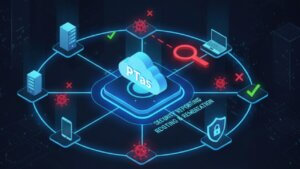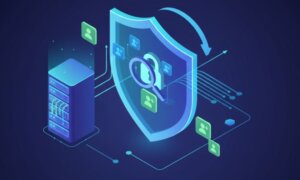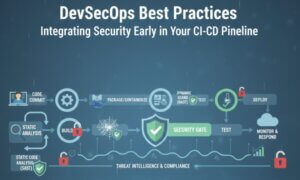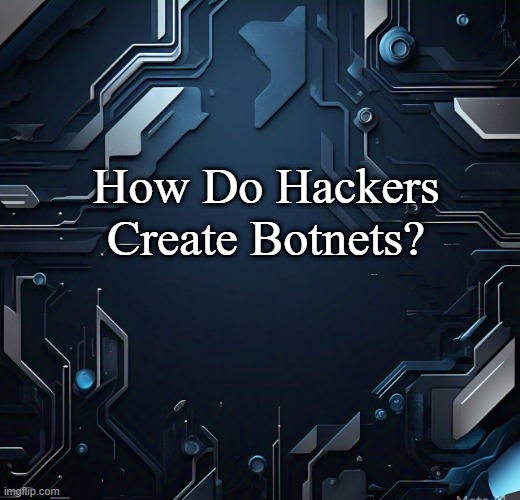Botnets are one of the most powerful tools in a hacker’s arsenal, enabling cybercriminals to conduct large-scale attacks with devastating consequences. A botnet is a network of compromised devices—ranging from computers and smartphones to Internet of Things (IoT) devices—controlled remotely by an attacker. Understanding how these botnets are created and operated is crucial in defending against them. This article explores the lifecycle of a botnet, from initial infection to execution of cyber attacks, and how organizations can mitigate the risk of botnet infections.
Table of Contents
The Lifecycle of a Botnet
Hackers follow a structured approach when creating botnets. The lifecycle of a botnet can be broken down into the following key stages:
1. Infection and Recruitment
The first step in building a botnet is infecting vulnerable devices. Hackers use various techniques to compromise systems and install botnet malware, including:
Phishing Emails – Attackers send deceptive emails with malicious links or attachments that, when opened, install malware on the victim’s device.
Exploiting Vulnerabilities – Hackers scan the internet for devices running outdated software with unpatched security flaws.
Brute-Force Attacks – Weak passwords allow attackers to gain unauthorized access to systems.
Trojanized Software – Malicious code is embedded within seemingly legitimate applications, infecting users who install them.
Drive-By Downloads – Malicious websites automatically install botnet malware on unprotected devices without user consent.
Once infected, the compromised device—now referred to as a “bot”—becomes part of the botnet.
2. Command and Control (C2) Communication
After infection, the compromised devices establish communication with a Command and Control (C2) server controlled by the hacker. The C2 server acts as the central hub where attackers issue commands and monitor botnet activity. There are different types of C2 architectures used in botnets:
Centralized C2 – All bots communicate with a single server controlled by the attacker. This setup is easier to manage but also easier to detect and shut down.
Peer-to-Peer (P2P) C2 – Bots communicate with each other rather than a single central server, making detection and takedown more challenging.
Domain Generation Algorithm (DGA) – Some botnets use automatically generated domain names to stay active even if law enforcement blocks their original C2 servers.
3. Botnet Growth and Propagation
Once the botnet is established, hackers seek to expand their network by infecting more devices. This can be done through:
Self-Propagation – Some botnet malware is designed to scan for additional vulnerable devices and automatically infect them.
Bot Recruitment via Dark Web Services – Cybercriminals sell access to botnets or lease them out for specific attacks.
Malware Updates – The botnet may receive updates that improve its ability to evade detection and infect new devices.
4. Execution of Cyber Attacks
Once a botnet reaches a sufficient size, hackers can use it for various types of cyber attacks. Some of the most common botnet-driven attacks include:
Distributed Denial-of-Service (DDoS) Attacks – Botnets flood a target’s network with excessive traffic, overwhelming its resources and causing service disruptions.
Spam and Phishing Campaigns – Attackers use botnets to send millions of malicious emails designed to steal credentials or spread malware.
Credential Stuffing Attacks – Bots automatically try stolen username-password combinations to break into accounts on multiple services.
Financial Fraud and Identity Theft – Botnets can harvest sensitive financial information, leading to unauthorized transactions and identity fraud.
Cryptojacking – Botnets hijack infected devices to mine cryptocurrency, using up computing power and electricity without the owner’s consent.
5. Evasion and Persistence
To avoid detection and takedown, botnets employ several evasion techniques:
Encryption and Obfuscation – Communications between infected devices and the C2 server are encrypted to evade network security monitoring.
Polymorphic Malware – The botnet’s code constantly changes to avoid signature-based antivirus detection.
Use of Legitimate Cloud Services – Some botnets disguise their activity by using reputable cloud services like Google Drive or GitHub for command distribution.
Failover Mechanisms – If one C2 server is taken down, the botnet automatically connects to backup servers to maintain functionality.
6. Monetization and Exploitation
Hackers monetize botnets in various ways, depending on their goals. Some of the most common ways botnets generate illicit profits include:
Ransom DDoS (RDoS) – Attackers threaten organizations with devastating DDoS attacks unless a ransom is paid.
Selling Access to Other Criminals – Botnet operators rent out their network to cybercriminals for launching attacks.
Selling Stolen Data – Credentials, financial information, and personal data harvested by botnets are sold on the dark web.
Extortion and Blackmail – Botnets that compromise IoT devices with cameras can be used to capture sensitive footage for blackmail purposes.
7. Takedown and Countermeasures
Law enforcement agencies, cybersecurity firms, and ethical hackers work to dismantle botnets by:
Identifying and Seizing C2 Servers – Disrupting the command structure can render the botnet inactive.
Patching Vulnerabilities – Encouraging organizations and individuals to update their software to close security loopholes.
Sinkholing – Redirecting bot traffic to controlled servers to neutralize the botnet’s impact.
Public Awareness Campaigns – Educating users about securing their devices to prevent infections.
How to Protect Against Botnet Infections
Organizations and individuals can take proactive steps to prevent botnet infections:
Use Strong, Unique Passwords – Avoid default credentials on IoT devices and enable multi-factor authentication.
Regularly Update Software – Keep all devices updated with the latest security patches.
Deploy Network Security Solutions – Use firewalls, intrusion detection systems, and endpoint protection tools.
Monitor Network Traffic – Unusual spikes in outbound traffic may indicate botnet activity.
Restrict IoT Device Access – Segregate IoT devices from critical business networks to minimize risk.
Conclusion
Botnets remain one of the most persistent threats in cybersecurity, enabling hackers to launch large-scale attacks with devastating consequences. By understanding how botnets are created and operated, businesses and individuals can better protect themselves against infections. Implementing strong cybersecurity measures, staying vigilant against phishing attempts, and keeping devices updated are crucial steps in defending against the growing menace of botnets.
References
Why Businesses Trust SecureMyOrg For Comprehensive Network Security
At SecureMyOrg, we uncover and fix all possible security vulnerabilities of mobile and web, while providing solutions to mitigate risks. We are trusted by renowned companies like Yahoo, Gojek and Rippling, and with 100% client satisfaction, you’re in safe hands!







Some of the things people reach out to us for –
- Building their cybersecurity program from scratch – setting up cloud security using cost-effective tools, SIEM for alert monitoring, building policies for the company
- Vulnerability Assessment and Penetration Testing ( VAPT ) – We have certified professionals, with certifications like OSCP, CREST – CPSA & CRT, CKA and CKS
- DevSecOps consulting
- Red Teaming activity
- Regular security audits, before product release
- Full time security engineers.
Relevant Posts

AI-Powered Phishing Emails: 7 Ways to Spot and Stop Them Before They Strike
Penetration testing as a service (PTaaS) lets experts simulate real attacks to uncover vulnerabilities before hackers do. This guide explains the process, benefits, and costs, helping businesses strengthen defenses with predictable, ongoing security checks.

Why Regular Penetration Testing is Essential for Modern Companies
Penetration testing as a service (PTaaS) lets experts simulate real attacks to uncover vulnerabilities before hackers do. This guide explains the process, benefits, and costs, helping businesses strengthen defenses with predictable, ongoing security checks.

What Is Penetration Testing as a Service?
Penetration testing as a service (PTaaS) lets experts simulate real attacks to uncover vulnerabilities before hackers do. This guide explains the process, benefits, and costs, helping businesses strengthen defenses with predictable, ongoing security checks.

How To Inspect Encrypted Traffic Without Breaking Privacy
Network administrators face a challenge: securing systems while respecting privacy. This guide explains how to inspect encrypted traffic without breaking privacy using metadata, anomaly detection, and machine learning ensuring visibility, compliance, and trust.

How to Audit Infrastructure as Code (IaC) for Security Vulnerabilities
Discover how to audit Infrastructure as Code (IaC) for security vulnerabilities with this practical guide. Learn to scan IaC files using tools like Checkov, fix issues like exposed resources, and integrate audits into CI/CD pipelines. Protect your cloud systems from misconfigurations and ensure compliance with clear, actionable steps.

DevSecOps Best Practices: Integrating Security Early in Your CI/CD Pipeline
This article provides a practical guide to embedding security into every stage of your CI/CD pipeline. Learn core DevSecOps best practices like SAST, DAST, dependency scanning, secrets management, and compliance automation to catch vulnerabilities early, foster a culture of shared ownership, and build a secure-by-design development process that accelerates release cycles.
